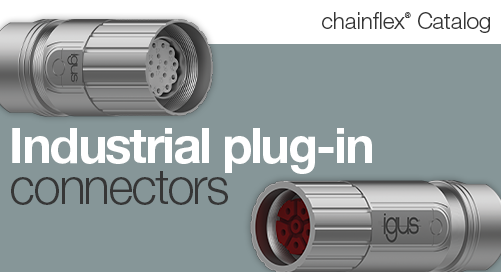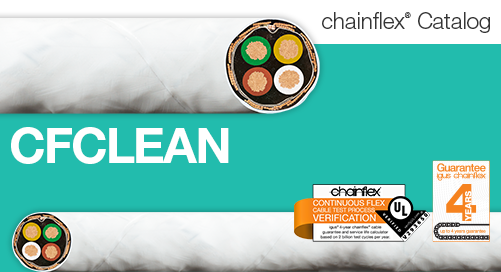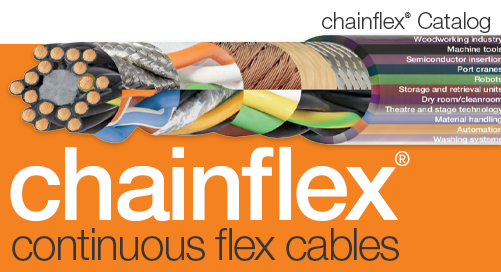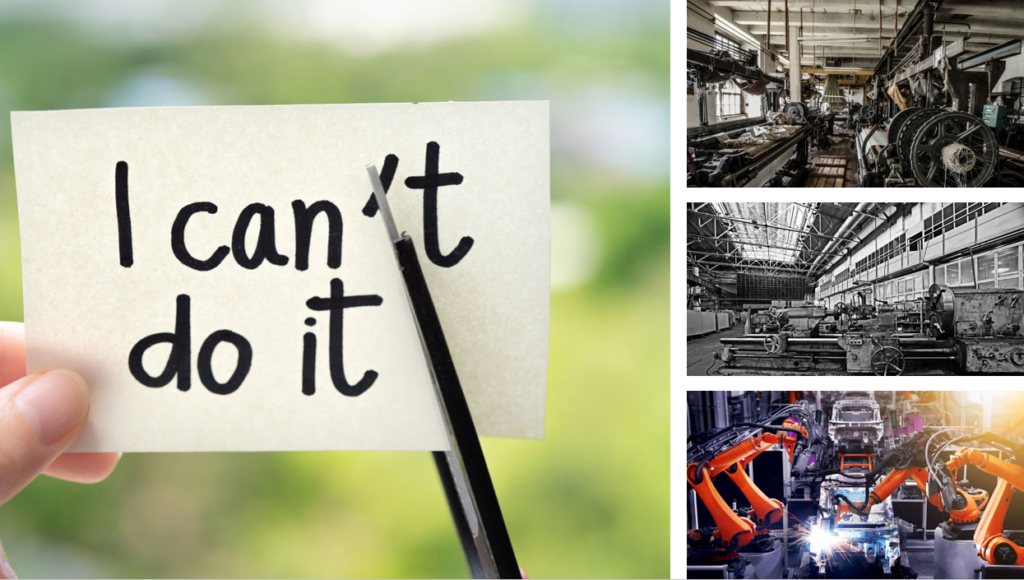 Original article appeared on: https://blog.igus.eu/how-igus-responds-innovatively-to-challenges-of-modern-manufacturing/
Original article appeared on: https://blog.igus.eu/how-igus-responds-innovatively-to-challenges-of-modern-manufacturing/
In the late 1980s, increasing automation brought with it faster and more challenging applications. If you look at production facilities, the cable carrier is becoming more and more prevalent. igus benefits from this thanks to its product line of polymer e-chain® cable carriers.
Now, however, travels in manufacturing operations are getting longer and machine movements are becoming more dynamic.
This had sometimes devastating consequences for the cables commonly available on the market at the time. Breakages and
corkscrews occurred repeatedly. Customers threatened to switch to alternative energy supply systems.
Accordingly, igus had to act and develop a product that met these new requirements. This was the only way to secure the company's own e-chain business and offer customers an attractive overall package.
The beginnings of chainflex®
The first chainflex cable was born and the dependence on less durable standard cables was history. This new type of cable brought with it specifications that are still used today (highly abrasion-resistant materials, short pitch lengths, cores wound in bundles, pressure-extruded outer and inner jackets).

The key to success: utmost care in planning and design, as well as extensive testing in specially developed test machines.
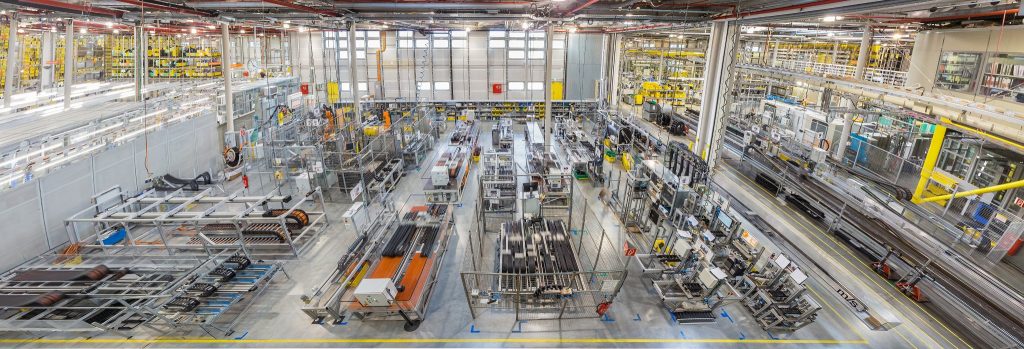
As is well known, however, industrial development did not stop there, but soon brought completely different requirements for energy supply.
New applications in manufacturing bring new requirements
Increasingly complex production methods and the increased use of industrial robots and the associated dynamics also brought the already proven chainflex cables to their limits.
If you think of a typical application within an automotive production line, for example, it quickly becomes clear what kind of movement could be affecting the cables here: torsion.

Again, igus was confronted with new problems and again there was no adequate solution on the market. A new product was needed.
Thanks to our experience from the development of chainflex cables for linear applications, we were already able to draw on a wealth of experience in cable production. It was also clear what was important when developing a new type of cable: testing, testing, testing!
In our
in-house test laboratory we created new qualification machines and eventually also supplemented real industrial robots of established manufacturers.
In-house qualification of torsion applications
Part of the qualification process is based on the so-called 3-fold or 10-fold torsion. Here,
chainflex CFROBOT cables are put through their paces in special 3D triflex e-chains. They must withstand torsional loads of +/-180°/m up to +/- 360°/m.
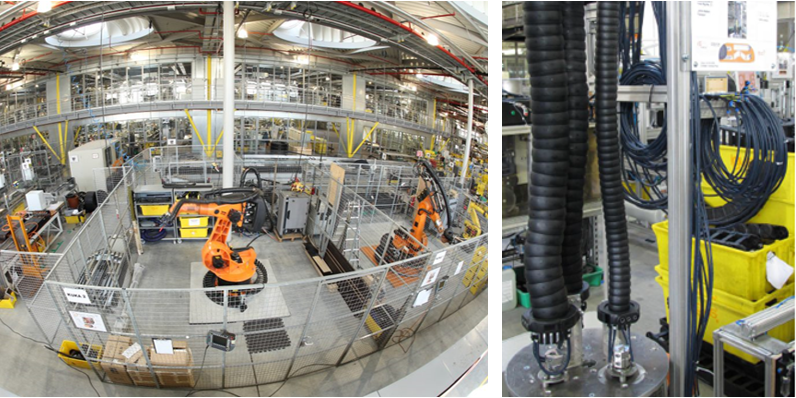
The structure of the cables themselves differs significantly in some aspects from cables for linear motion. Whereas in e-chain cables for example, tightly braided shields preferably provide long-lasting electromagnetic compatibility protection, they are rather counterproductive in torsion. The solution here is to rely on folded shields that can open, close and follow the torsional movement. Optionally, PTFE foils are also used, which enable the necessary compensating movements for individual elements of the cable.
Nowadays, igus offers a wide range of
torsion-resistant cables with the CFROBOT series.
For example, servo cables, classic control and
motor cables, and cables for controlling modern bus systems are available.
Challenge accepted
A brief look at igus' history shows: new challenges also hold opportunities for new products and markets.
If the market does not offer adequate solutions, it is possible to create new production and test standards with good ideas, precision and a lot of care.
Are you facing a new challenge in energy supply right now? We will be happy to help you choose the right cable. Feel free to contact a
chainflex cables expert today.

 Original article appeared on: https://blog.igus.eu/how-igus-responds-innovatively-to-challenges-of-modern-manufacturing/
In the late 1980s, increasing automation brought with it faster and more challenging applications. If you look at production facilities, the cable carrier is becoming more and more prevalent. igus benefits from this thanks to its product line of polymer e-chain® cable carriers.
Now, however, travels in manufacturing operations are getting longer and machine movements are becoming more dynamic.
This had sometimes devastating consequences for the cables commonly available on the market at the time. Breakages and corkscrews occurred repeatedly. Customers threatened to switch to alternative energy supply systems.
Accordingly, igus had to act and develop a product that met these new requirements. This was the only way to secure the company's own e-chain business and offer customers an attractive overall package.
Original article appeared on: https://blog.igus.eu/how-igus-responds-innovatively-to-challenges-of-modern-manufacturing/
In the late 1980s, increasing automation brought with it faster and more challenging applications. If you look at production facilities, the cable carrier is becoming more and more prevalent. igus benefits from this thanks to its product line of polymer e-chain® cable carriers.
Now, however, travels in manufacturing operations are getting longer and machine movements are becoming more dynamic.
This had sometimes devastating consequences for the cables commonly available on the market at the time. Breakages and corkscrews occurred repeatedly. Customers threatened to switch to alternative energy supply systems.
Accordingly, igus had to act and develop a product that met these new requirements. This was the only way to secure the company's own e-chain business and offer customers an attractive overall package.
 The key to success: utmost care in planning and design, as well as extensive testing in specially developed test machines.
The key to success: utmost care in planning and design, as well as extensive testing in specially developed test machines.
 As is well known, however, industrial development did not stop there, but soon brought completely different requirements for energy supply.
As is well known, however, industrial development did not stop there, but soon brought completely different requirements for energy supply.

 The structure of the cables themselves differs significantly in some aspects from cables for linear motion. Whereas in e-chain cables for example, tightly braided shields preferably provide long-lasting electromagnetic compatibility protection, they are rather counterproductive in torsion. The solution here is to rely on folded shields that can open, close and follow the torsional movement. Optionally, PTFE foils are also used, which enable the necessary compensating movements for individual elements of the cable.
Nowadays, igus offers a wide range of torsion-resistant cables with the CFROBOT series.
For example, servo cables, classic control and motor cables, and cables for controlling modern bus systems are available.
The structure of the cables themselves differs significantly in some aspects from cables for linear motion. Whereas in e-chain cables for example, tightly braided shields preferably provide long-lasting electromagnetic compatibility protection, they are rather counterproductive in torsion. The solution here is to rely on folded shields that can open, close and follow the torsional movement. Optionally, PTFE foils are also used, which enable the necessary compensating movements for individual elements of the cable.
Nowadays, igus offers a wide range of torsion-resistant cables with the CFROBOT series.
For example, servo cables, classic control and motor cables, and cables for controlling modern bus systems are available.


